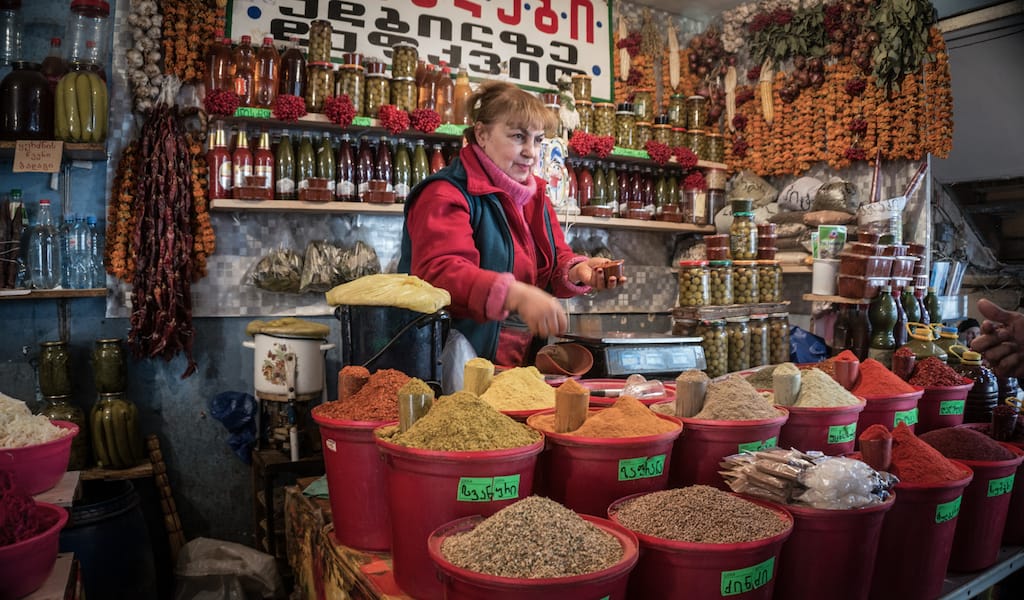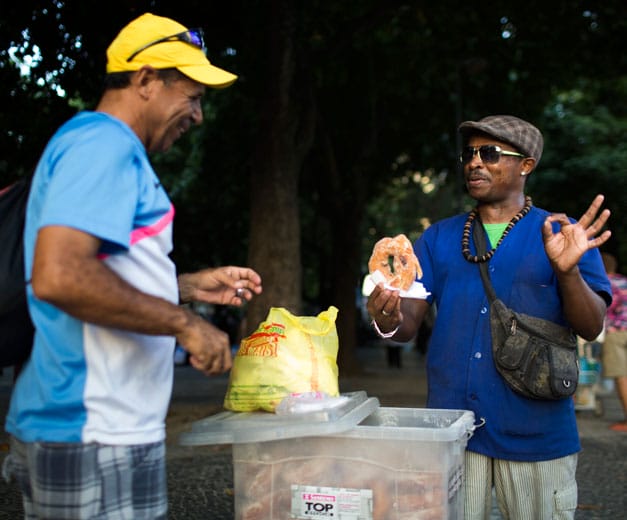Editor’s note: Traditionally we have published State of the Stomach pieces when beginning coverage of a new city, to provide an introduction to its food culture and how it shapes daily life. But as we dive deeper into the cities we work in, we’re taking stock of what’s changed, particularly as internal and external factors reshape both the culinary and urban landscape. So we thought it was worthwhile to, over the coming weeks, reexamine how some of these cities are eating, which will inform our coverage in the new year. First up is our look at Tbilisi.
A few months ago a little storefront joint opened down the street next to our neighborhood green grocer, a mom and pop operation that has been there for decades. A varnished wooden counter behind the iron-framed windows and a few matching tables make it fit the new bohemian-chic Tbilisi style popping up the street around Rooms Hotel, the hip four-star flophouse all the travel magazines are fawning over these days.
Although the wine list was not well-stocked, the food didn’t disappoint. The pork belly was not the standard room-temperature slab of bacon on a plate, but was oven-roasted and nestled on two puddles of cherry and plum sauce, zesty richness that nearly overpowered the smokiness of the two thick cuts of pork, which melted in our mouths. It was simple, bold and delicious. And it was Georgian, although not everyone will agree on that.
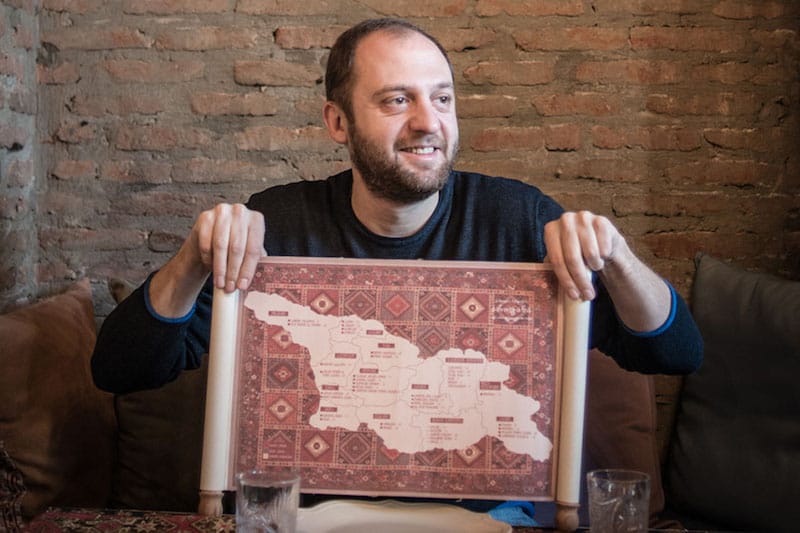
It is no exaggeration to say we are in the midst of a budding culinary revolution in Tbilisi, where people are redefining the conception of Georgian cuisine in flavors, methods and sophistication. Driven by greater contact with the rest of the world and growing international recognition of the soulful richness of Georgian food and wine, the movement is also a resurrection of old, pre-Soviet culinary traditions.
Some, however, see this trend as a threat to the country’s national identity, akin to denouncing the Georgian Orthodox Church, of which about 84 percent of the population consider themselves. In Georgia, you don’t mess with the Church, or with the food.
Stories of how thousands of Georgian martyrs chose death over forced Muslim conversion throughout centuries of conquest and occupation feeds the national psyche with enormous pride. Likewise, Georgia’s Soviet legacy of being the gem among the republics, famed for its tropical beaches, mountain health resorts, gregarious hospitality and excellent food and wine.
Yet is often overlooked that it was Stalin’s “national in form, socialist in content” policy that designed the Georgian national menu by replacing the bourgeoisie recipes that were common in Tbilisi before the Bolshevik revolution with hearty proletariat village fare. Moreover, the communist industrialization of agriculture totally changed what and how Georgians eat and drink.
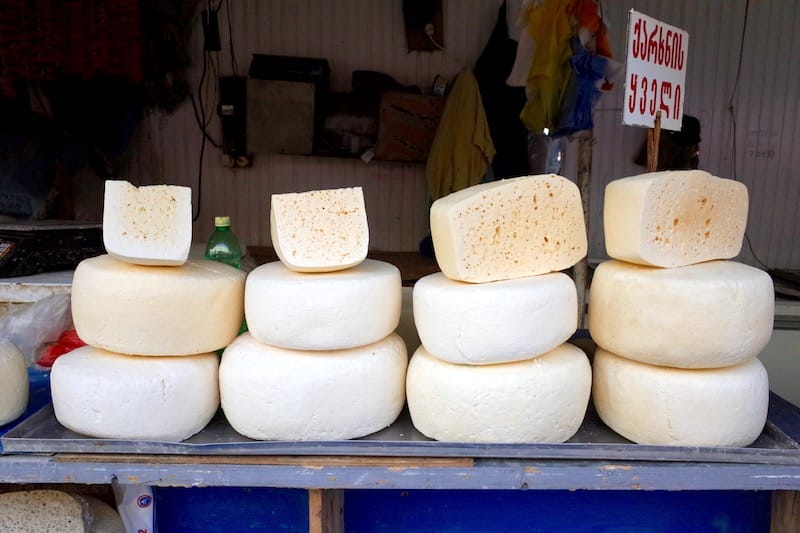
One example is how the ancient art of cheesemaking all but disappeared when the Soviets imposed the mass production of the four staples: Factory Cheese, Sulguni and Imeretian from cow’s milk, and Guda from sheep’s. Whereas there had once been scores of complex, aged cheeses throughout the country, the “big four” continue to dominate our tables today.
The Soviets also wreaked havoc on the wine industry. Hundreds of indigenous grapes were decimated to make way for tea, tobacco and other plantations while focus was placed on the mass cultivation of mostly two wine grapes, Saperavi and Rkatsiteli, which were watered down and fortified with sugar to meet quotas imposed from the central government.
We used to boast how Georgia’s food culture was one of the world’s best-kept secrets, but the word is out and we’re good with that
When we arrived in 2001, nobody in Georgia drank corked wine; that was the inferior brew for export to Russia. We drank the good stuff from jerrycans and old plastic bottles, straight from the countryside, where culinary traditions had been secreted away during the Soviet years. It was amber-colored, fermented with its skins on in huge terra cotta urns, buried in the ground generations ago. Dry, high-spirited and strong, this outrageous, luscious wine is made to be drunk in water glasses, to the bottom.
For diversion of the delectable, yet standard Georgian fare of mtsvadi, kababi and khinkali at that time, there were the Turkish restaurants on Aghmashenebeli that we were lucky enough to live near. All was good. And then it got better.

The 2003 Rose Revolution was a watershed moment, when a movement of mostly western-educated activists and politicians non-violently overthrew the corrupt post-Soviet regime and ushered in radical reforms that changed the entire social fabric of the country. It was like a fog of crippling disorder and stagnation had lifted as the country shifted its sights on western integration. Meanwhile, Georgians began to return from abroad to help rebuild their country – and some knew a thing or two about cooking.
Tbilisi is a melting pot of a little over one million people. It’s a collision of modern and ancient, neither Europe nor Asia – singularly “Tbilisi” where tradition is the overriding theme. Walk down a given street and you will smell the seductive aroma of fresh bread wafting out of old cellar bakeries, baked in cylindrical ovens just like it always has. Listen to the refrain of “matzoni, matzoni,” being sung by women lugging bags packed with jars of the fresh sour yogurt at eight in the morning in every neighborhood.
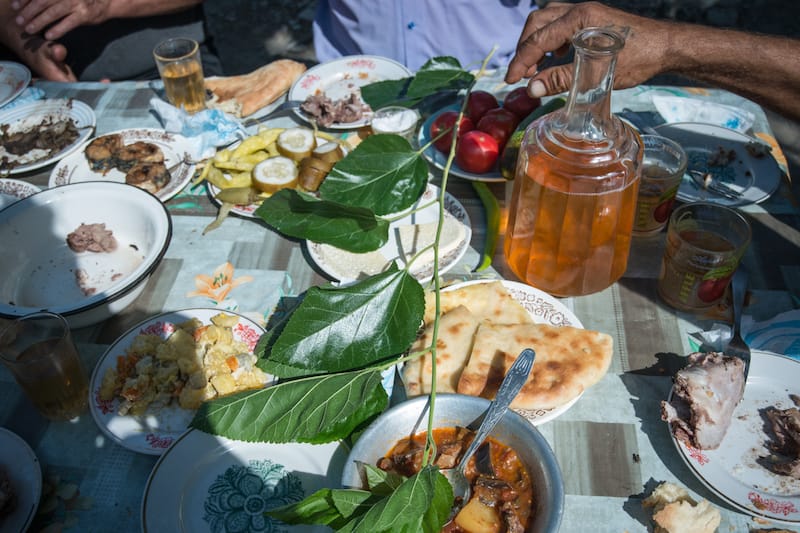
However, tradition is an organic evolution. When the Mongol horde migrated west, they brought the steamed dumpling manti with them. Georgian mountaineers adopted these savory balls of mutton-filled dough, dropped them in cauldrons of boiling water and called them khinkali. Down in Tbilisi, they are customarily filled with a mixture of ground beef and pork. Fifteen years ago, you would be hard-pressed to find khinakli stuffed with anything else, yet today many “traditional” restaurants make them with cheese, potato and mushroom, too.
Tradition is also rediscovery. Young chefs are digging into their pre-Soviet culinary history and finding long lost dishes from all corners of Georgia and from the pages of Barbare Jorjadze’s 19th-century cookbook, Georgian Cuisine and Tried Housekeeping Notes, which is full of Georgian as well as European, Russian and Middle Eastern recipes.
Thanks largely to geopolitics, we are now uncorking the best wine Georgia has seen in perhaps a hundred years. The Russian embargo on Georgian wine in 2006 meant factories were forced to make real wine to compete with new markets. But most exciting is seeing the growing number of people that are embracing the ancient method of organic winemaking. Some of these bottles are finding their way to the tables of Michelin-starred restaurants.
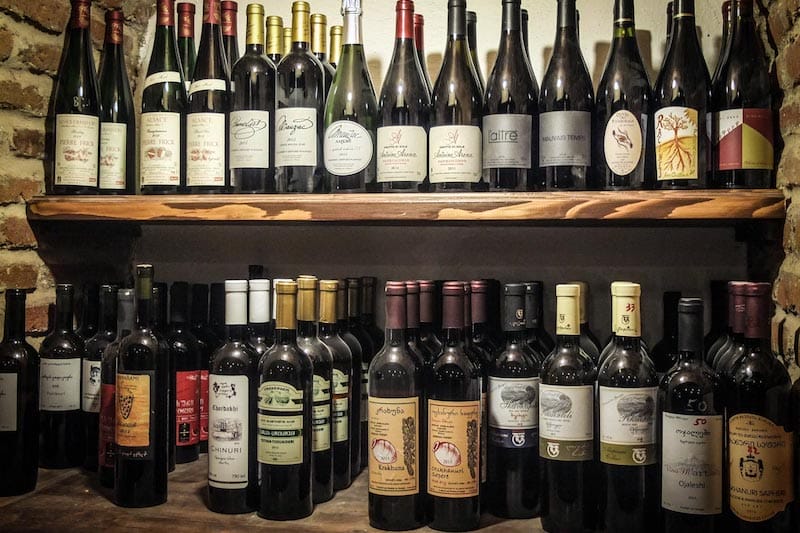
People are also changing the way they appreciate wine. The Georgian norm is to knock it back to the bottom and say, “great wine,” but at a pop-up natural wine festival in June we noted how many people were sniffing and actually tasting their wine. It wasn’t a fluke. “I have been making wine for 15 years, waiting for this day when Georgians learn how to drink wine,” remarked local winemaker Niki Antadze.
We used to boast how Georgia’s food culture was one of the world’s best-kept secrets, but the word is out and we’re good with that. Georgia has a bottomless, wild culinary spirit full of rewarding surprises, and we plan to keep diving deeper into it. For us, it doesn’t matter whether the khinkali we eat are meat-packed grenades or pesto- and nadugi-stuffed buttons. Either way, they’re Georgian. All they have to be is tasty.
 July 24, 2017 Wine Thieves
July 24, 2017 Wine Thieves
In the 1975 short film Gvinis Qurdebi (Wine Thieves), four mischievous villagers sneak […] Posted in Tbilisi December 31, 2018 The Eel Deal in Tokyo
December 31, 2018 The Eel Deal in Tokyo
The thought of eating unagi (freshwater eel) can be off-putting, yet the super-fragrant, […] Posted in Tokyo November 27, 2015 Erisvaldo’s Roscas
November 27, 2015 Erisvaldo’s Roscas
Erisvaldo Correia dos Santos dreamed of being a star. He saw himself as a humorist, a […] Posted in Rio, Street Food Masters
Published on January 15, 2018
Related stories
July 24, 2017
TbilisiIn the 1975 short film Gvinis Qurdebi (Wine Thieves), four mischievous villagers sneak into a stingy neighbor’s wine cellar, crack open his kvevri (enormous ceramic urn) and start drinking the wine stored inside. As they get drunk and rambunctious with toasts and song, they wake the winemaker who ends up joining them. It is in…
December 31, 2018
Tokyo | By Culinary Backstreets
TokyoThe thought of eating unagi (freshwater eel) can be off-putting, yet the super-fragrant, umami-tasting, velvety-textured delicacy is one of Japan’s prized foods. In Tokyo the eels are split from the stomach side for cleaning and then steamed before being grilled over charcoal and lavished with a finishing sauce, gleaming and sequestered in a covered lacquer box…
November 27, 2015
RioErisvaldo Correia dos Santos dreamed of being a star. He saw himself as a humorist, a singer maybe, and most certainly an artist. But the scrabbling northeastern immigrant came in 2005 to Rio, the Brazilian city of dreams, with just 20 reais – about $9 – in his pocket and a family to feed. “When I came…







































